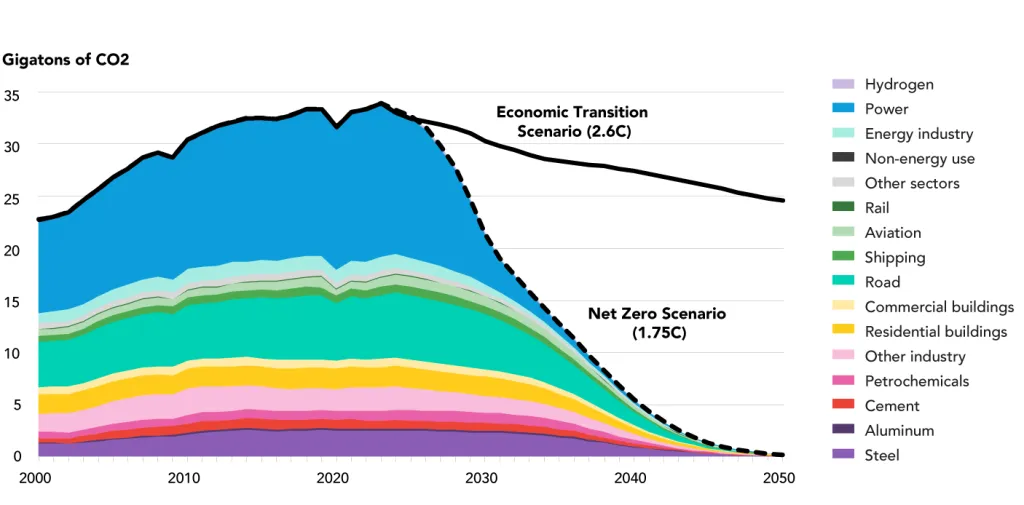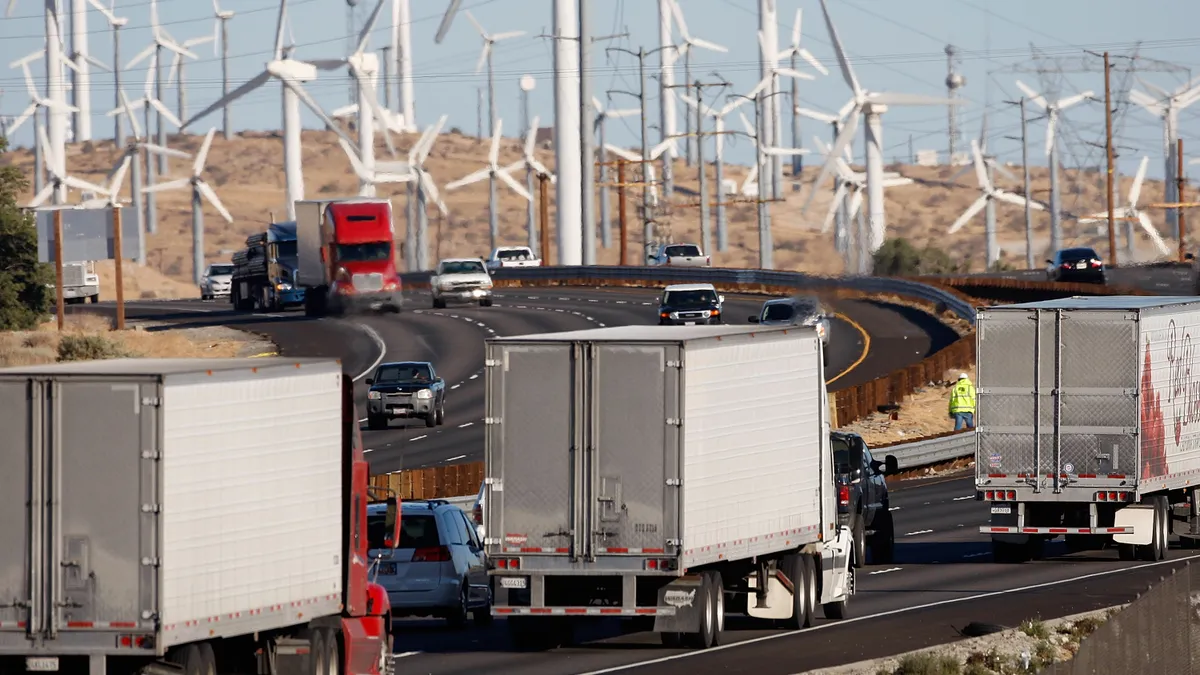Dive Brief:
- The U.S. energy transition is on track to correlate with an additional 2.6 degrees Celsius global temperature rise if it continues to follow a cost-based economic scenario and doesn’t take “decisive action,” according to a recent report from the BloombergNEF team.
- Reaching net-zero emissions by 2050 — which would correspond with a 1.75 degrees Celsius rise in line with the Paris Agreement’s goal of keeping temperature increase “well below 2 degrees Celsius” — will require a near-immediate, dramatic decrease in emissions from the power sector and “transitioning every sector of the energy system … to fully carbon-free sources,” per a public dataset released with the report.
- The outlook found the nation is currently on track to cut just 22% of its carbon emissions by 2030, compared to the 50% reduction needed to achieve the nation’s commitments to the 2015 global climate accord, according to a Sept. 25 release.
Dive Insight:
BNEF presented the report on Sept. 26 during Climate Week NYC at their New York City office. The report’s analysis shows a stark difference in the trajectory the U.S. is currently on and the net-zero scenario it should be following in line with Paris Agreement goals. While the scenario includes emissions from all countries, the economic transition scenario is “not the most optimistic picture” for the nation and a net-zero reality will require a “very different power system overall,” Tara Narayanan, BNEF’s lead analyst for U.S. trends, said at the event.

The researchers found that reaching net-zero will require a shift in spending priorities, including the need to invest an average of $3 in low-carbon energy for every dollar invested in fossil fuels through the end of the decade.
“The U.S. is running out of time and emissions budget to stay on a pathway that results in less than 2 degrees Celsius of global warming,” BNEF Head of North America Research Thomas Rowlands-Rees said in the release. “The heavy lifting needs to be done this decade.”
BNEF’s net-zero scenario comes with a $215 trillion price tag by 2050, which represents a modest 19% increase from the path the U.S. is currently on. The energy team’s economic transition scenario found the nation is currently on track to spend $181 trillion in global energy investing.
The U.S. will need a large uptick in electrification and clean energy generation to reach its net-zero goals and 2030 Nationally Determined Contribution target, Narayanan said at BNEF’s global energy and industry event. She said that electrification offers one of the least-cost options to cutting emissions, and the U.S. is going to “dramatically need a lot more clean power to be deployed as quickly as possible.”
Bloomberg’s energy research team found that recent U.S. legislation and investments have the nation on track to have 70% of its electricity generated by renewable energy by mid-century. However, a net-zero scenario will require an 81% renewable power generation mix, with the remainder composed of non-renewable nuclear energy, and any remaining natural gas and coal combined with carbon capture storage technology.
Given the prevalence of natural gas used as a cheap fuel source across multiple sectors in the U.S., Narayanan said reaching a net-zero scenario will also require an urgent boost in the use of carbon capture and storage technologies to address those emissions.
“We're seeing the very fixed nature of this fuel in the system,” Narayanan said last month. “To essentially continue to use [natural gas] without facing the consequences of emissions, CCS really becomes an urgent and immediate technology that needs to be deployed right away.”
Narayanan said in an email to ESG Dive on Wednesday that it will require “multiple technology solutions and policy interventions” to displace the use of natural gas for heating, power generation and as an industrial energy source and feedstock.
The economic transition scenario laid out in the report has a 67% probability of reaching that predicted 2.6-degree temperature rise, according to Narayanan’s email. She added that failing to keep additional temperature rise “well below” 2 degrees Celsius “would result in more extreme weather, as well as disruption to several ecological/planetary systems.”
In addition to ramping up carbon capture and storage for natural gas use, Narayanan said reaching net-zero will also require the nation to end the use of coal for power generation and stop selling internal combustion energy vehicles by 2030.
“To get to the Net Zero Scenario, immediate action is needed to deploy mature, low carbon technology (primarily renewables and electric vehicles) while cutting back fossil fuel use,” she wrote in the email. “2030-40 is the decade that requires the most heavy lifting, as low carbon technology that is in pilot stages or not yet commercial today needs to have ramped up to be widely deployed in industry, heavy transport, and buildings.”










